.jpg)
Mindfully Integrative Show
Welcome to the Mindfully Integrative Podcast! We are dedicated to featuring inspirational and successful individuals who have embraced mindful investing to achieve optimal integrative wellness. Our podcast dives into all aspects of mindfully incorporating integrative functional health into our lives, aiming to help create a more balanced and fulfilling life. New episodes are released every Friday and cover a wide range of informative and entertaining topics, interviews, and discussions.
We explore a mindful approach to the mind-body connection with guests discussing various topics in integrative holistic health. This includes areas such as whole health, functional medicine, spiritual health, financial health, mental health, lifestyle health, mindset shifts, physical health, digital health, nutrition, gut health, sexual health, body positivity, family health, pet health, business health, and life purpose, among others.
Dr. Damaris G. is an Integrative Doctor of Nursing Practice, a Family Nurse Practitioner, a mom, and a veteran. For collaboration, interviews, or to say hi, you can contact her via email at damaris@mindfullyintegrative.com. You can also find her on LinkedIn at or https://www.linkedin.com/in/damarisdnp/. To join our membership and access resources, visit our website at https://mindfullyintegrative.com .
Please note that the information shared here is for informational and educational purposes only and should not be considered medical advice. Always consult with a physician or other licensed healthcare provider when making healthcare decisions. Enjoy the podcast!
Mindfully Integrative Show
Mindful Chat with Ken O'Connor Mobility Coach #antichairtraining
More Mobile Coach is a remote yoga instructional business designed to help you stay active at home. We need more content here. The quick brown fox jumps over the lazy dog. In the days of my youth I was told what it means to be a man.
Flexibility + Strength = Mobility
Get ready to “Bullet Proof” your joints, cross-train like a beast, and blast through anything holding you back with a More Mobile You!
Available on live stream video, or in person.
Remote,Private & Seasonal Retreats
Ken O’Connor – #MoreMobileYoga
MoreMobile Yoga
https://moremobileyoga.com/
Dr. Damaris G. is an Integrative Doctor of Nurse Practice Family Nurse Practioner Mom, Veteran,. BC Family Nurse Practioner & Holistic Integrative health, Studies Functional Medicine
Social Media🔗
Collab/Interview/Say Hi/Email Me at info@damarismaria.com
Linked In- https://www.linkedin.com/in/damarisdnp/
Website- https://damarismaria.com/
Founder- Mindful Integrative Healthcare
https://mindfulcomforts.com/
Office Text/Call-732-355-3469
Join our Facebook group Mindfullly Integrative Wellness Warriors- https://www.facebook.com/groups/301997383826243
Mindfully Integrative Merch
http://tee.pub/lic/JAsiMkghrBg
Sponsor Affiliates
Empowering Your Health
Get YOUR Own
Joburg Protein Snacks
Discount Code: Damaris15 Or Damaris18
Feeling need to Lose Weight & Become metabolically Healthy
GET METABOLIC COURSE GLP 1 REseT
This course is designed for individuals looking to optimize their metabolic health through integrative and functional medicine approaches. Whether you're on a GLP-1 medication or seeking natural ways to enhance your metabolic function, this course provides actionable steps, expert insights, and a personalized roadmap sustainable wellness.
Are you feeling stressed, tired, or Metabolism imbalanced?
Take advantage of our free mindful steps to help improve your well-being.
ENJOY ONE OF our Books
Mindful Ways Health Wealth & Life
https://stan.store/Mindfullyintegrative
Join Yearly membership ALL IN ONE FUNCTION HEALTH
Ask Us for help...
Hi, how are you? This is mindfully integrative podcast, and your host, Dr. Damaris g am your integrative family nurse practitioner. And today we are on a call and on YouTube channel, talking with and mindful chat with Ken OConnor, mobility, expert mobility coach, and he is going to tell you a little bit more about himself. But I met Ken in a yoga teacher training a number of years back, and we did yoga teacher training together. And he has been doing years and years of yoga years and years of mobility, coaching and addition to many other things in the healthcare field, and helping people feel better in their joints and moving more and his yoga, and his website is more mobile yoga, and he'll tell you a little bit more about himself. So hi, Ken, thanks for joining in.
Unknown:Hey, Damaris. Thank you for having me,
Damaris Grossmann:of course. And so I wanted to just like, kind of tell the audience a little bit like Fun fact, or something people may not know about you. I mean, obviously said yoga, but you know what else, but people might not know about you?
Ken O Connor:Well, you know, I'm originally from New Jersey, that's how we met each other all those years ago. Yeah. I moved out to Colorado about a year and a half ago. And I've, you know, I've just turned 40 years old, I've had a long working career, finding success and different points in my life. And now, I've been practicing yoga for over 10 years now. And I've been able to transform that into a business where I help people build their mobility to get healthier, stronger joints. And it's been really exciting to be able to do this. So, you know, thank you so much for having me on the show. So we can talk about this really important topic.
Damaris Grossmann:Yeah, no, I'm glad to have you on the show. I, I mean, that's the whole point of this podcast is to really highlight inspiring people that are doing something to help others in a different way. And that's what you're doing, you know, you're bringing an integrative approach to something that, you know, the, maybe the traditional way may not be showing it, so you're putting it and highlighting that and making and helping others. So I want you to you know, first talk about what you do discuss what mobility Yoga is discuss your your, your, the terms, and then we'll go further into like, what kind of like struggles, you know, what kind of brought you to that. So let's talk about what it is first.
Ken O Connor:Yeah, sure. So, mobility training is really interesting, because it combines multi dimensional aspects of Fitness, Health, yoga, exercise, and pulls it all together into a total package that helps people to enhance their joint health long term, which has become a really big issue for folks, especially in the past year, where a lot of people have been staying home, they maybe their gyms got shut down, and they have been getting out as much as they used to. The crazy thing that starts to happen is now that we're starting to get back out again, lockdowns are starting to and people are starting to get back out to living their life, we're starting to see more joint problems kind of rise up. Because if you've been locked inside for a long time, your joints atrophy. And when you finally go back out to run around, they're dehydrated. Yeah, they're dehydrated, you got to get that water, right. And what happens is your joints have atrophied. So if a year has gone by, and you want to go out and run like the way you used to, for a very unpleasant surprise with your joints, because they're not ready to handle all the new pressure of movement again, right. So I help people reinvigorate their body by understanding the mechanics of their joints, how you can exercise them in a way that helps enhance their health. And, you know, just understanding, you know, the fundamentals that help you keep healthier for longer because it feels like in many ways, we become disconnected from our own bodies working in the modern economy, how many of our jobs have now turned 100% sitting in front of a computer, right? So many of our jobs are dependent on us, you know, sitting quietly in a chair for hours out of your day, focusing eight to 10 hours a day, you have successful people like bankers, ad executive scientists, but also truckers and teachers who sit in a chair for many hours out of a day. And then when they go to stand up, guess what their hip is not functioning at 100% capacity. And it's you know, very liable to become injured just by doing simple movements around your house or running around outside. without even realizing it. You're setting yourself up for injury if you don't learn how to maintain your joints in a healthy way.
Damaris Grossmann:Maybe it makes sense, but it's like almost make sense, but yet, people don't get it initially. So that's why you're filling that gap. But you're you're just letting people be more aware with with their body right?
Ken O Connor:Exactly. And you know, we both did yoga teacher training back in 2013. She feels like wasn't that long ago at all, but that was eight years ago. Yeah, the program that we got into was was powerflow style yoga, which is a great yoga system. You know, I think we took a lot from that teacher training, it was a 200 hour program. But you know, as much as I love yoga, I started really getting into the science behind why yoga works, right? Because yoga, yoga is a 5000 year old movement art, and it's effective. But, you know, when I started doing yoga, back then, I had injuries in my ankle and in my back from when I played football, that I've thought were always going to be problems. For me, I always thought that I was going to have nagging injuries in my ankle and my back forever, because of my injuries. But when I started doing yoga, I was able to rehab them back to full range of motion, I was getting stronger. And I was like, What is this magic? Like? How is this working? Like, you know, and that's how I stumbled into the science behind how yoga works. Its mobility training. So I got certified and functional range conditioning that's called FRC. It was a system developed by Dr. Andrea Spina was a chiropractor who started seeing patterns of injury and effective recovery exercises that he started to put together and organize for his clients start using, and he developed the system to help people enhance their joints, and specifically train their joints, to increase their range of motion, but also on how to path on appropriate muscle tissue to help activate those joints. Because without the appropriate muscle tissue being stimulated, it's hard to motorize those joints in direction you want to go. Right?
Damaris Grossmann:You can if you don't have any muscles to support the joint then right? Is that where you're set like your, your it'll just stay floppy or it'll just it won't work. Right?
Ken O Connor:Exactly. Right. So what you see sometimes with fitness is we put an emphasis on like, kind of like what I call like a one dimensional training program, like you go to the gym, especially for guys, right? We do you go to the gym, you benchpress right, you get stronger, you lift weights, you want to get bigger muscles, you want to look a certain way,
Damaris Grossmann:right. But,
Ken O Connor:you know, in the process of trying to gain an aesthetic, or to look bigger, you might actually be sacrificing some of the mobility in the joints because you overemphasize one aspect of strength without emphasizing the complete supporting tissue around the joints that actually allows you to move it in an appropriate way. I mean, you see a really big strong guy, right? Very impressive. But can you scratch his back?
Damaris Grossmann:Oh, my God. They're always like, they're more broader, but they can't like necessarily move like one way another way. You know what I mean?
Ken O Connor:right? Exactly, you know exactly what I'm talking about. So like that. The reality is that, you know, you can actually be following a fitness program that over emphasizes one aspect of movement, while sacrificing other aspects of your skeletal muscular system. So when you're, if you're always bench pressing really strong, eventually, the shoulders actually pinch inward, right? And then you have to go back and reassess how you can enhance the strength for the posterior head of your shoulder, learn how to
Damaris Grossmann:mobilize and pull back. So you're not only teaching mobility, but you're also teaching balance within the body, because it's like the front, the front body can't be heavy, heavily loaded, and then the back body can't be heavily like it's kind of going back and but that that's an awareness that you don't even see, but you see it in people, because you can talk with them about it.
Ken O Connor:Yeah, once you see it, you can't unsee it now that I understand how these systems work. When I walk around out in the public, I can like see like it all the time. Yeah, I see people with mobility deficits everywhere I look at because it's like, you try to do something, and they can't quite move a certain way or they're at the gym, and they're lifting weights in a way that's counterproductive to their total body. And you know, some people aren't ready to have that conversation yet, because you realize that so much fitness is actually very ego driven. So when you truck you can't like push people and tell them, you're exercising wrong, right? And you kind of got to let people figure it out on their own, which has led me into my Instagram and my Facebook and like the way I read my social media, I just put out content that helps people learn the importance of these things, not by telling him but actually showing them videos of exercises that makes the lightbulb go off and say, Oh, that's the movement I'm missing. And that's how it is I'm helping educate people about mobility, wide support.
Damaris Grossmann:I probably have some mobility issues holding my new son, my son, my 10 month old son on this one hip, ah, like, and I thought I would be alright. And I know, I know, for a fact this one side, I'm like, kinking with and I'm like, I know I've got some some stuff going on lately. I'm like, oh, man
Ken O Connor:jackley having a child is a huge reason I would cry gratulations on that, by the way. Yeah,
Damaris Grossmann:totally different world, but trying to still, you know, work.
Ken O Connor:You know, you're not alone. In that observation. Several of my clients have had children recently, or not too long ago. Yeah. And they do report it to me that you're part of the reason I want to start training with me is that they had some hip dysfunction since they had the baby. And after I started showing them my training, they were able to regain their full range of motion and strengthen their hip because I showed them movements that they didn't realize until I show that and having a baby will change your body. I help, especially with women who are going through that process, how to bring their body back into full capability after they may have gone through that process.
Damaris Grossmann:Wow. Yeah, no, I mean, that that's just it's really like, a very necessary and deep kind of, you know, it's like it's the the physical body, but yet you're, you're just getting people more aware into that, like, and I don't think always people are doing it, you know, um, was there something that kind of brought you into this thought and integrative health of, you know, your injuries or something that you struggle through life, like in your story that kind of brought you because, like, my story, you know, I've talked about like in my previous podcast, but I didn't just come here to spread, there is a reason why you are integrative, and why you are looking beyond the traditional, and not just on, it's a bad thing, but you're trying to, you know, make it What were you saying, right before we spoke about?
Ken O Connor:Yeah, well, you know, I, there's a lot of meaning behind what it is I do. And I've mentioned before that, in my own personal case, I had injuries that I had trouble recovering from, and it wasn't until I started doing a movement practice through yoga, that I realized what was going on. And then, you know, it was on Instagram, where I started seeing some videos of movement coaches out there that were doing movements that kind of like they weren't the mobility coaching, I'm talking about functional range conditioning, there's a lot of practitioners that post videos of themselves, like I do now, doing these movements, and I started watching them. And I realized that they were doing yoga movements better than people that do yoga. And I was like, What like, I mean, because because when you're in yoga, which, by the way, yoga is great, like I love you, like very, I enjoy him. But with all you're doing is going to the classes every week, or every other day or whatever, and you're just going through the same routine, repetitively over and over and over again, you kind of put your brain on cruise control, and that might feel comfortable because you like I said, fitness can be a very ego driven practice, right? You keep on going my yoga class, you know, when we burn down the mat. But in your pursuit of that one dimensional fitness goal, you might miss a lot of other things that make fitness worthwhile, which is discovering how to better operate your body for longevity. And I heard myself doing yoga, okay, I I was trying too hard to in. Sun Salutation I remember diving into the hamstring stretch, and, and micro tearing my hamstrings. This is probably around 2014 or sharp. And I was saying to myself, what the heck have I done? Like how did I am I hurt myself doing yoga. And I started realizing that if you don't really fully understand how to complete your yoga practice, you can actually injure yourself. And that's why I started learning that you can't just stretch, stretch, stretch all the time, you have to create a strength building component attached to flexibility, you have to stretch and Lex to reinforce better mobility patterns in your body. See, when it comes to mobility, its flexibility plus strength. There's two components. In order to create mobility. You have to have flexibility, and you have to have strength when you're in yoga and all you do is stretch, stretch, stretch stretch. It's a one dimensional exercise. You have to come block combine stretching plus, flexing a muscle tissue to generate force and power. Because height being hyper mobile is actually a problem. If you're too hyper mobile, you lack the ability to control your muscle tissue. You can have some catastrophic, catastrophic effects. If you fall off a bicycle too hard. You can blow your joints out. If you're hyper mobile. If you get a car accident and you're hyper mobile, your joints could fly apart. Right so it was a very powerful personal thing for me. But then I started looking at the environment. I said, Wait a minute, I'm somebody who loves yoga, and I didn't even know all this stuff. That means other people have no idea what's going on. And if you look at the statistics, it's while I mean, I tell you more about that. But to give you an idea of how serious it is, in the year 2000, there was about 138,000 hip replacement surgeries. Okay. Do you want to take a wild guess where we're at now? Huh? Last, I
Damaris Grossmann:mean, double that or half of that? Like, I mean, you think it's definitely more right?
Unknown:It's definitely more
Damaris Grossmann:what? I'm gonna say What 150?
Ken O Connor:We are approaching 500,000 annual hip replacements.
Damaris Grossmann:1000.
Ken O Connor:So it's almost quadrupled in 20 years. Oh, my God, that some of it.
Damaris Grossmann:I mean, that's not that's a combination of things. But that's, that's sad.
Unknown:Right. It's a
Damaris Grossmann:bummer. Some of it is age related fine. But still age related people, I've still met older people that, you know, they still are still moving pretty great.
Ken O Connor:Yeah, but and it's true as the population ages, you'll see some work joint replacement being put in place. But you got to ask yourself is all this really necessary, maybe it's a symptom of a greater problem. Maybe it's a symptom of our modern lifestyles. inflecting a weight like a wasting away of our joint strength, because you go back one or two generations, you weren't getting hip replacement surgeries this common. Now it's like they're ready to cut you open and put a new one in you. And guess what? hip replacement, a joint replacement really only has about 10 year active life, you get to go back and get cut off and put a new part in anyway. So now you have people who are like in their 40s, like, I'm in my 40s. Now, there's people in their 40s that are getting like hip replacement surgeries. That's insane. It's like, this is entirely preventable. If we just learn to exercise and create better mobility, the key regions of your joints that may have been ignored due to your modern lifestyle,
Damaris Grossmann:your mind lifestyle, right. And I think that point, and then you putting in the lifestyle management, which I will talk about, and you'll probably talk about another time diet and what you put it like your foods that you consume, in addition, so it's, it's this, you know, keeping that you know, it's a encompassing Whole Health thing and, and the mobility of your joints. People are not listening to their bodies, or they're putting their also their lifestyles or not, not just the sedentary ness, just they're not thinking about how important it is to take care of themselves as a whole, you know,
Ken O Connor:right on. And, you know, there's three big reasons why we have joint problems in general, just to make it very simple for our audience to follow along here. three big reasons why people have joint problems are number one, lack of blood flow. So we talked about atrophy. So if you're sitting in a chair for most of the day, your body's gonna assume that form, it's gonna send blood to the muscles that you're using. And it's going to reduce flow to the body parts that you're not actively using.
Damaris Grossmann:So every place, you know, actually, I know for walk after this talk, let me tell ya,
Ken O Connor:go for a walk. And then the second thing is a lack of central nervous system connectivity, which goes hand in hand in blood flow. Now, it could be that you have decent blood flow in your body, and you're healthy, and your heart rates good and all this stuff. But it could be that central nervous system connectivity might be atrophying in certain body parts, because just not using them regularly. It's kind of in the same zone. But what's important remember is that your brain is super efficient, to the point where if you're not regularly stimulating a part of your body, or using a part of your body, your brain will begin to shut off that body part and redirect its energy towards the parts that you are using. So in a way, it's like your body is trying to create efficiency and the use of calories and all that stuff. But it's dangerous because if you go for an extended period of time without activating a muscle, then it begins to like disconnect from growth with the rest of your body. And then you have to start saying, Okay, if I'm going to have efficient exercise program, am I creating blood flow? And am I stimulating central nervous system connectivity, if you have parts of your body that aren't getting that you have a problem? And then the third thing is that if you've had a prior injury that didn't fully heal, okay,
Damaris Grossmann:that scar tissue build up, injury and then that's, that's That's complex, but that's still fixable. In some, in a lot of cases, not every case. But in a lot of cases, when there is there is a very rare genetic people with joint issues. But those are rare, very small percentage. So you're talking about 95% of the population there is you can help.
Ken O Connor:Yeah, yeah. A very wide swath of the population, really EADS to adopt these methods that I promote. That's why I love getting out there and social media and putting out free information to help educate people on intelligent workout programs,
Damaris Grossmann:giving them value, you're giving them information, and then they're visually seeing it. I saw one the other day, and I was like, Oh, that's great. And I was, and you know, that's what people want to see. And they want to know about, but they, you know, they want to get information or they just don't have a clue what to do. You know?
Ken O Connor:Yeah, they really don't. And oftentimes, it comes at funny enough. You know, it's, it's when people mentioned ego before, right? And it's not until sometimes your ego gets hit, that you realize there's a problem. So sometimes I hear from, for example, golfers, right? Like, ah, you know, I can't swing like I used to, I don't know, what's going on right. Now. I'm not really I like golf, but it's not my regular thing to do. Yeah. But I realized that golf is all about joint mobility. If you have good joint mobility, you can go out there and swing, you'll you'll do fine. But as you get older, if you're not teaching your body to maintain mobility, it will begin to wear itself out. So a golfer might be saying, oh, man, I can't swing like I used to. And then they see a video of me doing like a shoulder or wrist or something else, like a workout like that. And they say, Oh, I got to hire that guy to help me. And then all of a sudden, the whole mindset changes, and they realize, oh, my goodness, this is going to not just improve my swing, this is going to improve my entire quality of life. You know?
Damaris Grossmann:Right, right. Yeah, I mean, that you're going on a physical, then you're giving them balance, quality of life, and then you haven't even I don't know, if you've been touched on I mean, I I've been doing a lot of functional medicine training. I don't know if dogs. Yeah, I'll have a. So I don't know, if you do so and functional medicine training that I've been doing. And they talk a lot about even supplements, and then like things like that, you know, the hydration. So it's like, the whole lifestyle package here, you're gonna bring to these people. And it's like, I wish they would know how much you know, it's so necessary, and sometimes just the awareness alone. So what you're offering individuals to just bring that to them is just like, it's pretty pointless, you know, it's pretty important. I would like to know is, Was there anyone in your life that kind of like, inspired you to, like, get into this realm? Or a quote, or something? Or even a book? That kind of, I mean, I know, you said, you just found this new chiropractor that got you into this mobility training, but was there something prior to that, that got you inspired?
Ken O Connor:You know, I don't I don't know, if I have anything really come into mind. I mean, I tried to just pay attention to a lot of Honestly, I was type of person that kind of waited social media for a long time. And then one day, I just kind of woke up and, and I remember getting a new phone and opening up an Instagram account. And that's kind of when it all opened my eyes. I started seeing people put out content that was highly applicable to the types of skills that I wanted to develop. So there's a cornucopia of people out there that help people move better. I'm not I'm not the only guy out here Do I fully aware that I have my own methodology and style that does a yoga mobility hybrid. But what kind of broke me out of my shows, I started seeing other mobility coaches, like I said, Do doing yoga, better than people who do yoga full time, right? Because they learn how to master their body in a way that one dimensional training could never left. Okay? So if you look up FRC functional range conditioning, you will see lots of trainers out there that promote a great quality of life for their client base. And I admire them and I look forward to building a business that can do something like that as well. You know, I get up every day and I get excited to talk about this stuff. And it's it's obviously a challenging world to build a business but what's happened in the past year is I was able to start teaching all this stuff online. And I was originally planning on working at local gyms when I moved out here my week when I was supposed to started in March of last year, everything got shut down. So I was like out of work before I even got a chance to like really rev it up. And I pivoted my old business to online training, and now I teach everything through one on one intensives that we booked multiple weeks out. And we, we really get in depth on what they need to do to achieve their mobility goals. And I have clients as old as 78, down to age 20. Right? That 17 year old wants to play with their grandkids 20 year old wants to increase their, you know, athletic ability, right? So it's like, I work with a variety of clients based on many different goals, and I help them develop a game plan to improve their life, whatever it is they're trying to go after. So, you know,
Damaris Grossmann:there's a lot of different aspects to that, right, I bet you you probably have a list of things like, you know, stories of each, you know, any, you have to obviously full any story or patient or, you know, client that you've had that, you know, that came up that was like, Oh, my God, you know, thank you for this.
Ken O Connor:Yeah, yeah, that, that happens a lot. People who have a contractor who's a hard working guy for 20 years, or whatever, as a successful contracting business, but for a lot of those years, he was out there, you know, doing a lot of the work itself. And, you know, he developed a shoulder that just wanted to was that protrack might want to extend outward, right? And he lacked the ability to pull the shoulder back into the socket. Oh, wow, we did like all this intensive training, it took all the pain out of his neck and shoulder because he learned how to fully mobilize that one joint, that's just one client. Yeah, you know, I have dozens and dozens and dozens of other clients I've worked with over the past year that went from, you know, damn, I can't move that body part. So Wow, I can't believe I live without moving that tiny part for so long.
Damaris Grossmann:I really appreciate how you pivoted your business and I mean, your the way of thinking not only, you know, transitioning in the integrative health, you know, perspective like and, but also just how you pivoted your business in this really struggling time of, you know, the pandemic, and you said, you know, what, I'm gonna make lemonade out of lemons, and I'm gonna, I'm gonna make something out of this. And, and, you know, I think that's really, like, mindful, and just your, with the way that you're thinking and also very intuitive. And I think that's, you know, I, that's awesome. And I can't wait for listeners to reach out to you, in your more mobile yoga, and I, you know, I'm gonna have links on that. But I would love if you could share one more, you know, technique, or just a tip for our listeners and those watching on YouTube.
Ken O Connor:Yeah, yeah. So, you know, a simple thing, if you're at home right now, or at work, and you're in front of your computer, and you're watching this video you're listening in, you know, a very common thing that people have is a lack of risk mobility. Okay, so I'm gonna show you a fun little technique to get you to understand the importance of your wrist mobility, because as you type on a keyboard for many years, you develop kind of like a carpal tunnel effect that gets locked the place, right? You want to go on lock that mobility. And this is a very simple thing to do. You know, right, we're not trying to lift 1000 pounds, I'm not trying to run a marathon. I'm just trying to rotate our wrists. Okay, so you take your arm out like this, I want you to imagine a platter of food on your car. Okay? And food, right, the platter of food, you want to keep it level, because if you tilt your arm down like this, the platter of food falls off. And if you tilt your arm like that, the platter of food pulls up, and if you roll your arm over, the platter of food falls off. So the only thing you can do is keep it perfectly level. Maybe you put your hand or anything like this, you watching a video can see what we're doing. Take your wrist and aim it downward, keeping the fingers stuck together, and then rotate towards the thumb side and a 360 degrees C you're rolling your wrist of marriage. Do you really yeah,
Damaris Grossmann:I don't have it.
Ken O Connor:Right. So what happens is when you type on a keyboard, over an extended period of time you develop a joint dependency. Okay. What's happened to most folks is that in order to rotate their wrists, they recruit their elbow. And that's actually
Damaris Grossmann:elbows definitely being used right now.
Ken O Connor:Yeah, that's actually a mobility deficit. Okay. Great. You're totally rolling like that. Yeah.
Damaris Grossmann:No joke.
Ken O Connor:You're dropping it, you're dropping the food. cranberry sauce on the carpet, grandma's gonna get upset. Look, you got to make sure you're taking risks. So what you need to do this is just an identifier right here to Maris you realized that your wrist is capable of so much mobility and yet, we create joint interdependence by not fully maximizing the capacity of each individual joint. Okay, and when that happens So you set yourself up for injury because you have disproportionate weight distribution hitting the various joints when you do different activities. So instead of using your, your wrist to its full capacity, you rely on the elbow to bear the wing.
Damaris Grossmann:These forearms. Yeah, mine were definitely I mean, you could see it just, and I wasn't trying to like, you know, that I put in I'm having, I think I only get like half,
Ken O Connor:right. So, like in a situation like that, when I work with my clients, we identify a mobility deficit like that. What I do is I help them customize exercise, they're specifically going to address that mobility deficit to help repair it and ultimately get stronger by enhancing the muscle tissue that had been underutilized over time.
Damaris Grossmann:That makes sense. That's awesome. Oh my god. Thank you. You're welcome. I will have to go into that further. We'll have to help me
Ken O Connor:to follow up with you. to prescribe you with new exercise.
Damaris Grossmann:Yes, between that and my hip? I No. No, I really appreciate you being on this podcast and this YouTube channel. I mean, it's a passion project and the work but mind fully integrated podcast is for individuals like you that are trying to inspire and change the healthcare field and and just do more things to help others and that's what you're doing. And do you have anything coming up or a way that people can reach you all have the their information in the show notes, but I just wanted to know, a way that if you have any trouble easiest
Ken O Connor:way to get a hold of me is you know more mobile yoga, Chino comm shoot me an email, and you can check out all my video content on Instagram, Facebook and YouTube. Just use the hashtag more mobile yoga, more the hashtag anti chant,
Damaris Grossmann:more mobile yoga, okay,
Ken O Connor:hashtag more mobile yoga or hashtag anti chair training,
Damaris Grossmann:anti white chair training,
Ken O Connor:anti chair training, I help people break out of their chair dependency.
Damaris Grossmann:Oh, my God. I mean, this is so you know what I actually Well, most of the time I use this kneeler for sitting. But I've been using a Charlie Emma de terre lately. And I'm like, ah, I can feel the difference. I can feel it.
Ken O Connor:Yeah, so I help people train out of their chair. You know, I help people break the habits that accumulated over many years. And like I said, there's successful people out there, accountants, CPAs, executives, right. All kinds of people who've made a great career out of their life, but they've sat in a chair for the majority of the time, they especially need to break out of that position and agnate there also so they can live and enjoy their fullness of life. So thank you so much for inviting me on your show the marriage, I'm really proud of what you're putting together here. I'm really excited to see you grow this thing out, and help connect people with the right kind of wisdom and knowledge they need to help make real growth, real change in their life for healthier way. Goodness knows the world needs it. 2021. So I really applaud you for your efforts. Keep up the great work. And I look forward to follow up with you in the future, maybe another podcast or something else. You have the works.
Damaris Grossmann:Yeah, that would be great. I'm so excited. And thank you so much for joining in on the show. And it's been awesome. So thanks, guys for joining in on this mindfully integrative podcast and I just very much so appreciate you with this mindful chat with Ken and I hope you guys have a mindful way each and every day. And I must say everyone bye
Podcasts we love
Check out these other fine podcasts recommended by us, not an algorithm.
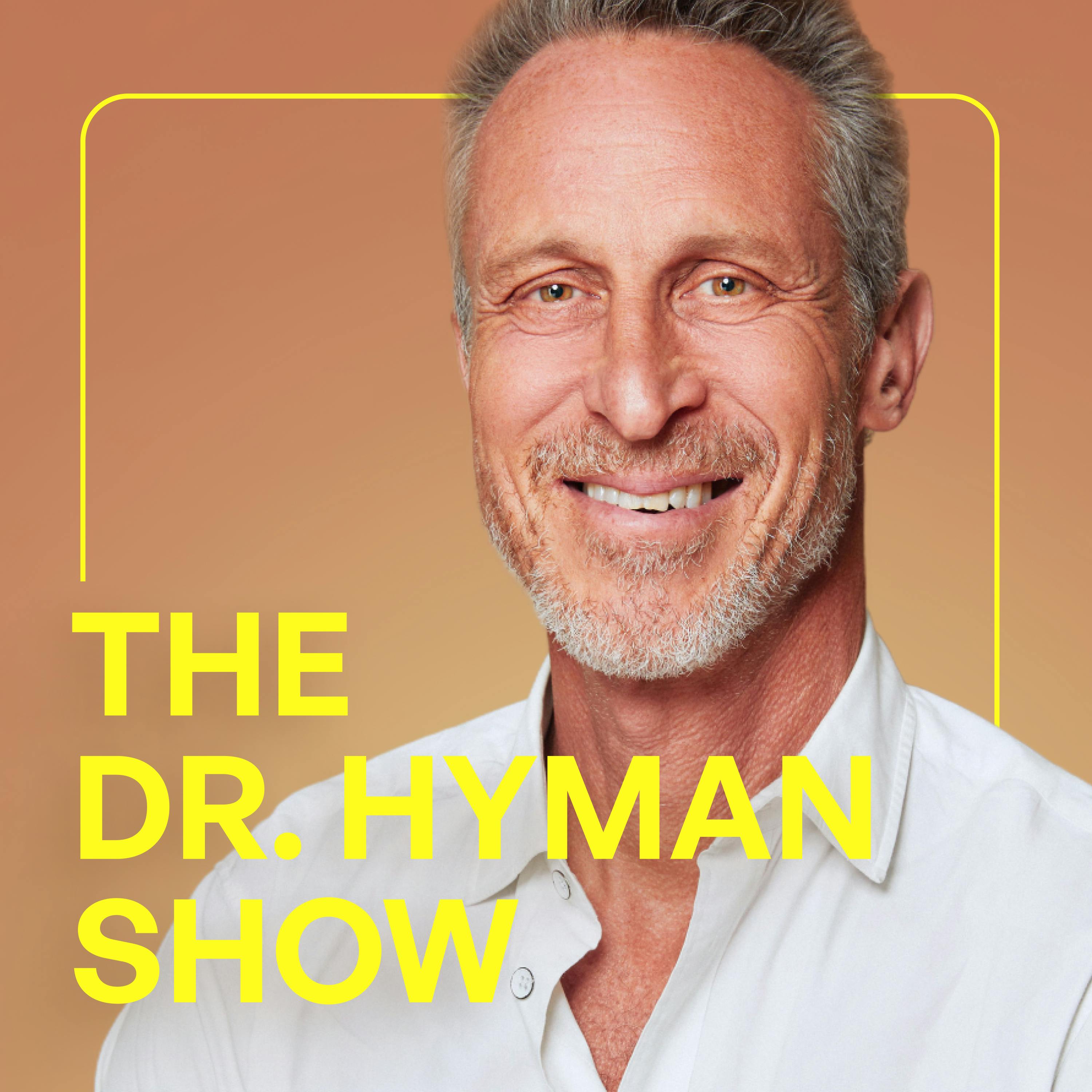
The Dr. Hyman Show
Dr. Mark Hyman
Functional Fertility with Dr. Kalea Wattles
Kalea Wattles
On Health for Women
Aviva Romm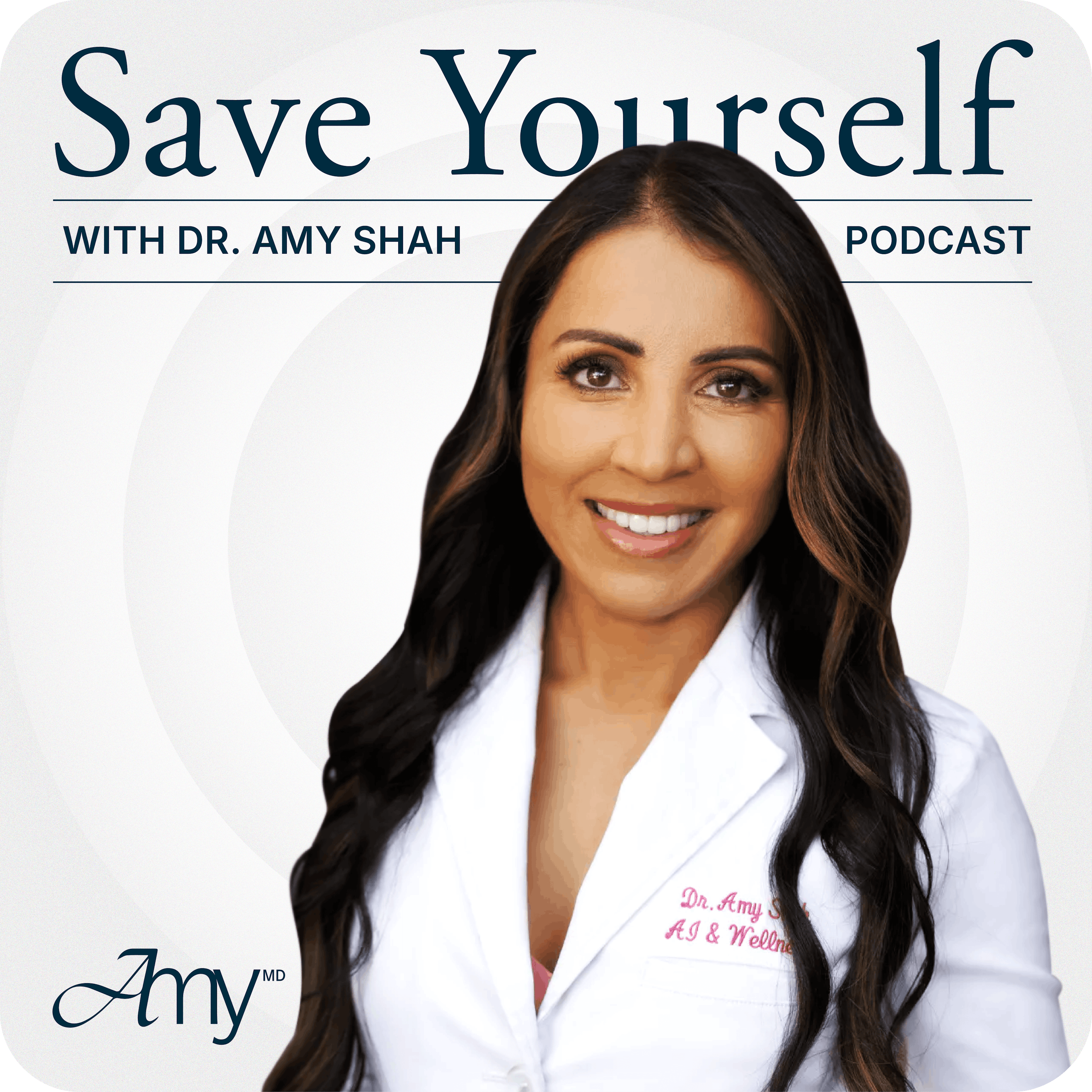
Save Yourself With Dr. Amy Shah
Dr. Amy Shah
Huberman Lab
Scicomm Media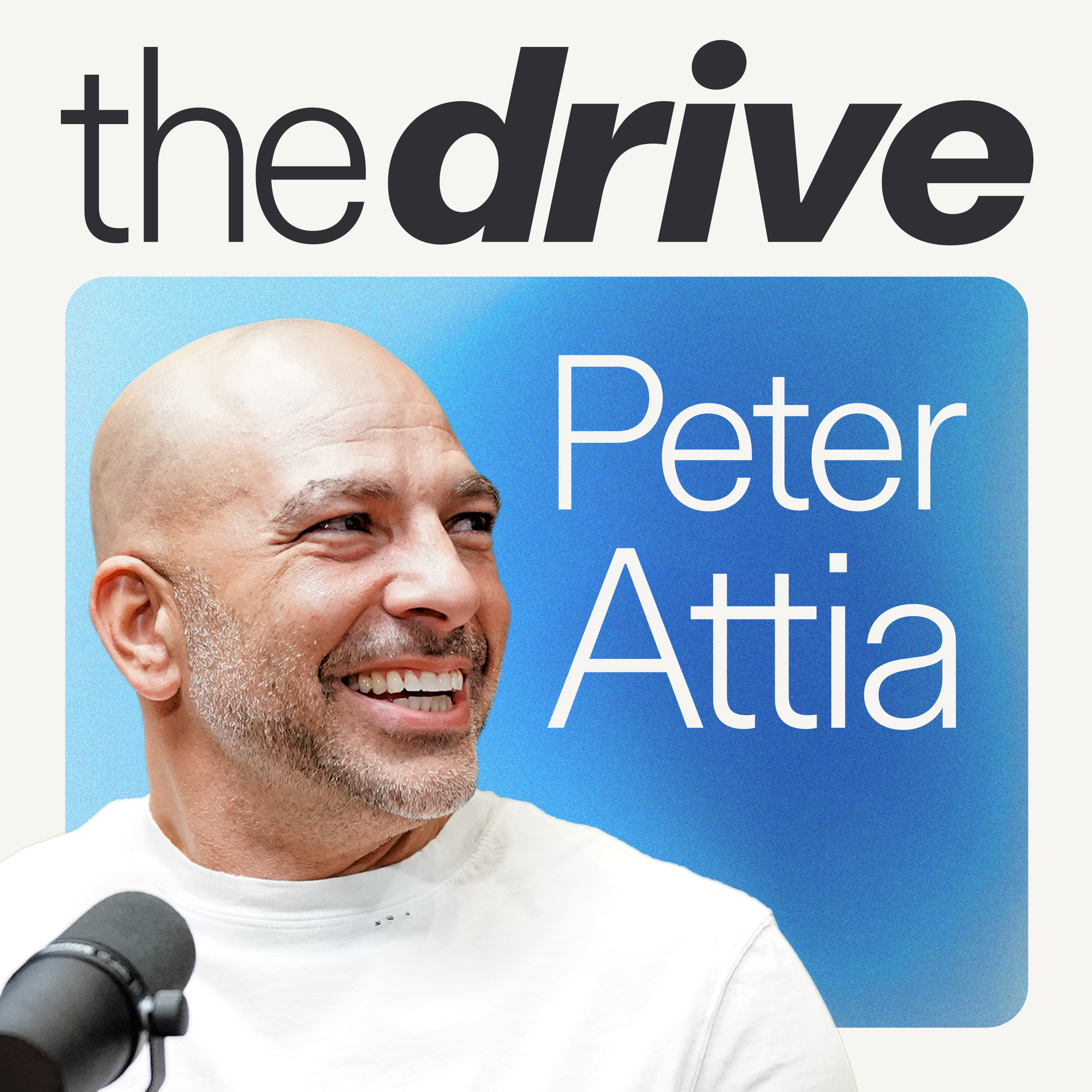
The Peter Attia Drive
Peter Attia, MD
The Metabolic Classroom with Dr. Ben Bikman
Insulin IQ
FoundMyFitness
Rhonda Patrick, Ph.D.
Change Your Brain Every Day
Dr Daniel & Tana Amen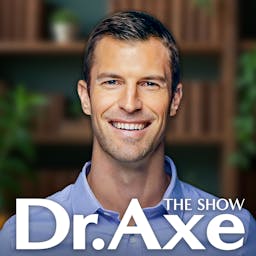
The Dr. Josh Axe Show
Dr. Josh Axe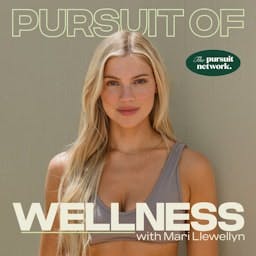
Pursuit of Wellness
Mari Llewellyn & Pursuit Network
Feel Better, Live More with Dr Rangan Chatterjee
Dr Rangan Chatterjee: GP & Author
The Level Up Podcast w/ Paul Alex
Paul Alex Espinoza
Faith Over Fear
Jennifer Slattery, Faith Over Fear Author and Speaker
